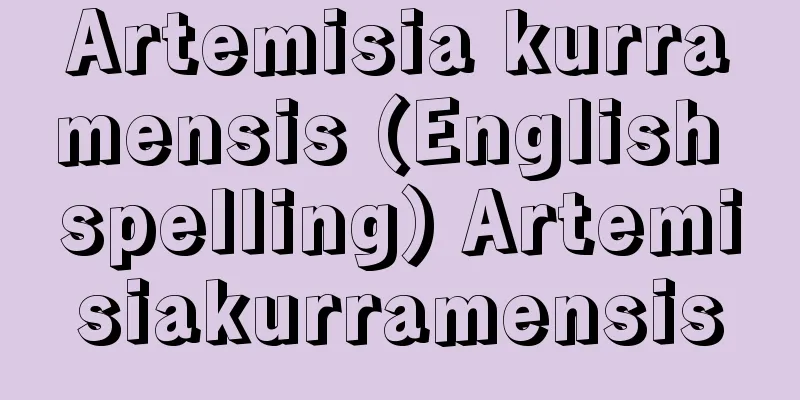Zaragoza - Saragoza (English spelling)

|
The capital of Zaragoza Province in the Aragon region in northeastern Spain. It is located on the right bank of the Ebro River, at an altitude of 200 meters. It has a population of 614,905 (2001). It is located approximately 250 kilometers away from important cities such as the capital Madrid, Barcelona on the Mediterranean coast, Valencia, and Bilbao on the Bay of Biscay, making it a strategic location for railways and highways. It is also connected to France through the Sompor Pass (1,622 meters) in the Pyrenees. It is the economic center of a rich horticultural agricultural region irrigated by the Ebro River and the Imperial Canal, and is also a thriving cultural center with a university founded in 1474. Since 1964, industrialization has been promoted as a base for development policies, and industries such as construction, machinery, chemicals, and food have developed, and the urban area has expanded due to a rapid population increase. La Seo Cathedral (12th-16th century), built on the site of a mosque, is known for its mixture of Romanesque, Gothic, Islamic and Baroque styles. The Gothic Del Pilar Basilica (17th century) and the Statue of Mary (14th century) to the northwest are also famous. The Islamic period citadel also remains. [Yutaka Tanabe and Yumiko Takizawa] historyIt was inhabited by Iberians and called Salduba until the Roman conquest at the end of the 1st century BC. Emperor Augustus established a military colony here called Caesaraugusta, from which the current name Sarakosta comes. At that time, it flourished as a commercial and military center, but surrendered to the Suebi in the 5th century, and came under the control of the Visigoths in the 6th century. It was occupied by Muslims in the 8th century, and Charlemagne (Charlemagne the Great) briefly besieged it in his epic poem "The Song of Roland". It was recaptured by Alfonso I in the early 12th century, and later became the capital of the Kingdom of Aragon (1118). Food riots occurred in the 18th century, and it resisted the French invaders in 1808-09. It was occupied by rebels early on in the Spanish Civil War, and became the front line on the eastern front. [Yasuhiro Fukazawa] Source: Shogakukan Encyclopedia Nipponica About Encyclopedia Nipponica Information | Legend |
|
スペイン北東部、アラゴン地方サラゴサ県の県都。エブロ川中流右岸、標高200メートルに位置する。人口61万4905(2001)。首都マドリードをはじめ、地中海沿岸のバルセロナ、バレンシア、ビスケー(ビスカヤ)湾に臨むビルバオなどの重要都市からほぼ250キロメートルの等距離にあり、鉄道、幹線道路の要地。ピレネー山脈中のソンポール峠(1622メートル)を通じてフランスとも結ぶ。エブロ川およびインペリアル運河によって灌漑(かんがい)された豊かな園芸農業地帯の経済的中心地であり、1474年創立の大学をもつ文化の中心地としても栄えている。1964年以降、開発政策の拠点として工業化が推進され、建設、機械、化学、食品などの工業が発展し、人口の急増により市街地が拡大している。モスク跡に建てられたラ・セオ大聖堂(12~16世紀)は、ロマネスク、ゴシック、イスラム、バロックの諸様式の混合建築として知られる。その北西にあるゴシック様式のデル・ピラール寺院(17世紀)とマリア像(14世紀)も名高い。イスラム時代の城塞(じょうさい)も残る。 [田辺 裕・滝沢由美子] 歴史紀元前1世紀末にローマが征服するまでイベリア人が居住しサルドゥバSaldubaとよばれていた。アウグストゥス帝はここにカエサルアウグスタCaesaraugustaという軍事的植民地を形成、そのアラビア語形サラコスタSarakostaが現在の地名の由来である。当時、商業的、軍事的中心地として栄えたが、5世紀にスエビ人に降伏、さらに6世紀に西ゴート人の支配下に入った。8世紀にイスラム教徒が占領、これと闘ったシャルルマーニュ(カール大帝)が一時包囲し、その武勲詩『ロランの歌』に登場する。12世紀初頭アルフォンソ1世によって奪回され、その後アラゴン王国の首都となった(1118)。18世紀に食糧暴動が起こったが、1808~09年にはフランス侵入軍に抵抗した。スペイン内戦では早くから反乱派が占領、東部戦線の前線となった。 [深澤安博] 出典 小学館 日本大百科全書(ニッポニカ)日本大百科全書(ニッポニカ)について 情報 | 凡例 |
Recommend
Yo - Yo
〘noun〙① Under the ritsuryo system, an item paid to...
Shosei
A Chinese poet from the late Ming Dynasty. His pe...
AF-2
A compound that was used as a disinfectant. It is ...
Tsukuba to Tsukuba
A district in the north of Tsukuba City, Ibaraki ...
Bone marrow aspiration
This is a test that is performed by taking blood f...
Paul Claudel
French playwright, poet, and diplomat. Born on Au...
baptismal name
…Baptismal name. Also called baptismal name, it i...
forest zone
...Note that forests that are in the intermediate...
Ikuta Man - Ikuta Yorozu
A Japanese classicist of the late Edo period. The...
Kisei Main Line - Kisei Main Line
The name of the JR line that runs along the coast...
Gaspar - Gaspar
…However, the third-century Alexandrian theologia...
Yun Dai Ying (English spelling)
1895‐1931 An early leader of the Chinese Communist...
Ialysos
…It is the largest island in the Dodecanese (Dode...
Japanese language and Japanese character questions - kokugokokujimondai
Various problems arise when resistance or obstacle...
Pratt, JH
...In modern terms, the idea is that the crust fl...









